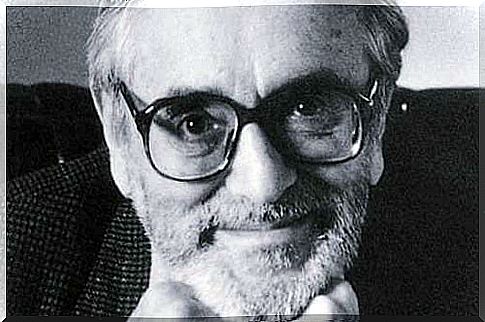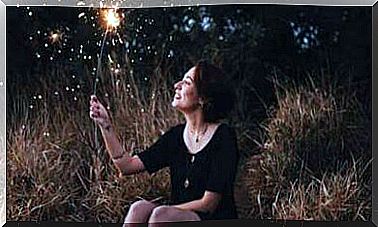Salvador Minuchin And Family Structural Therapy

Salvador Minuchin’s theories are a reference point for family structural therapy. This Argentine psychiatrist and pediatrician is remembered for his charisma and dedication as a professional. His contributions are immense and have allowed us to understand much better the dynamics and daily challenges of families.
When Minuchin left us in 2017, he was nearly 100 years old. Many associate his name with that of illustrious psychologists such as Sigmund Freud, BF Skinner or Carl Rogers. Certainly, Minuchin was a pioneer and innovator in his field and has helped many children by involving their families in the therapeutic path. Without the family, he said, it is impossible to understand the origin of certain symptoms.
He also dealt with alliances between family members. He taught us how power is exercised and how submission in the family originates. An exceptionally good psychiatrist at bringing out the emotional component, among other things. In this way, he explained, it is possible to better deal with tensions, traumas, damages and unmet needs.
Salvador Minuchin was an architect who reconstructed family structures to explain the dynamics that fuel pathological processes. His interventions have favored the opportune changes in the psychotherapeutic intervention always putting children first and considering them precious interlocutors.
Biography of Salvador Minuchin, family therapist

Salvador Minuchin was born in Argentina in 1921. He studied medicine at the University of Córdoba, where he graduated in 1948. Later, he spent a few years in Israel as a doctor for the army. After that experience, he decided to settle in New York to study psychiatry.
Here he will train as a psychoanalyst at the William Alanson White Institute. This path allowed him to work as a child psychiatrist at the Wiltwyck School for Boys. The period between 1954 and 1962 was decisive: Minuchin decided to distance himself from the classical therapeutic approach.
He began to promote a therapy that provided for the inclusion of the children’s families, with a view to a more dynamic system. Each session was observed by the other psychiatrists from a room with a one-way mirror. In this way, all therapists would learn from each other to improve their techniques.
Through this innovative approach, Salvador Minuchin theorized for the first time the structural family therapy.
The collaboration with Jay Haley and the family orientation clinic
After formulating his new theories in the field of family therapy, Minuchin traveled to Palo Alto, California. Here he worked with Jay Haley at the family orientation clinic.
This celebrated therapist was one of the founders of short family therapy and the mentor who would help him refine and further mature his innovative approaches.
From this collaboration came the book Families of the Slums (1967), in which Minuchin describes for the first time his theory based on the structural model. Later, his most important project would arrive: the Child Guidance Clinic in Philadelphia, which he founded and directed for about 10 years.
In 1981 he left the position of director to found the Institute for Family Studies. Here he taught therapists and family members to improve their approach to children and optimize educational pathways. Salvador Minuchin died on October 30, 2017 in Boca Raton, Florida.
Salvador Minuchin’s contribution to family therapy

The experience at the Wiltwyck School for Boys was instrumental in the development of the structural family model. At that time Minuchin noticed, for example, that it was not much use to concentrate all the work only on those young people who, once rehabilitated and discharged, did everything they could to return to the center. Next, here are Salvador Minuchin’s theoretical contributions to family therapy:
- We must not focus only on the patient: rather, we must consider the context, that is, the family.
- Once the context has been analyzed, one can understand the invisible structure full of signifiers that determines the life of the child.
- Very often pathological behaviors tend to persist due to family dynamics.
The purpose of Salvador Minuchin’s therapy
The therapeutic goal in Salvador Minuchin’s structural model is to understand the interactions present in a specific family system in order to transform them. To do this, the therapist must try to improve the behaviors and relationships of the members of that family, making the child or adolescent the protagonist.
The family as a dynamic entity and as responsible for the identity of the person
One of the cardinal principles of Minuchin’s theoretical model is that the family is a dynamic entity in constant motion:
- The therapist does not have to focus only on the interaction of that group of people. On the contrary, it must understand the changes, explore the past and investigate the processes that led to the current situation.
- The family is responsible for the identity of each member of which it is composed.
- Interactions, games of force, domination, submission, etc. in short, all family dynamics induce the person to assume a certain role within the family.
- One of the most determining phenomena for family dynamics is the desire for separation and autonomy inherent in every adolescent.

Diagnosis of the family structure
In order to make the diagnosis of the family structure from child to adolescent, the therapist must focus attention on the following aspects:
- Limits.
- Subsystems.
- The evolutionary cycle of the family.
- Family alliances and coalitions.
- The hierarchy of power.
- The degree of flexibility to change.
- Supportive and stressful situations.
Salvador Minuchin left us important books such as Families and Family Therapy, Family Kaleidoscope and A Guide to Family Therapy Techniques . His works are appreciated by academics, social justice experts, family therapists and in general by anyone interested in improving the lives of children and the environment in which they move and relate.
In conclusion, it is clear that by correcting and improving family dynamics, a more dignified, healthy and happy future can be promoted for all. Salvador Minuchin was undoubtedly one of the first to understand this.








